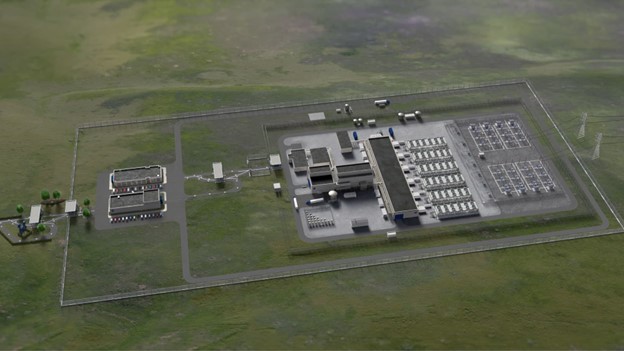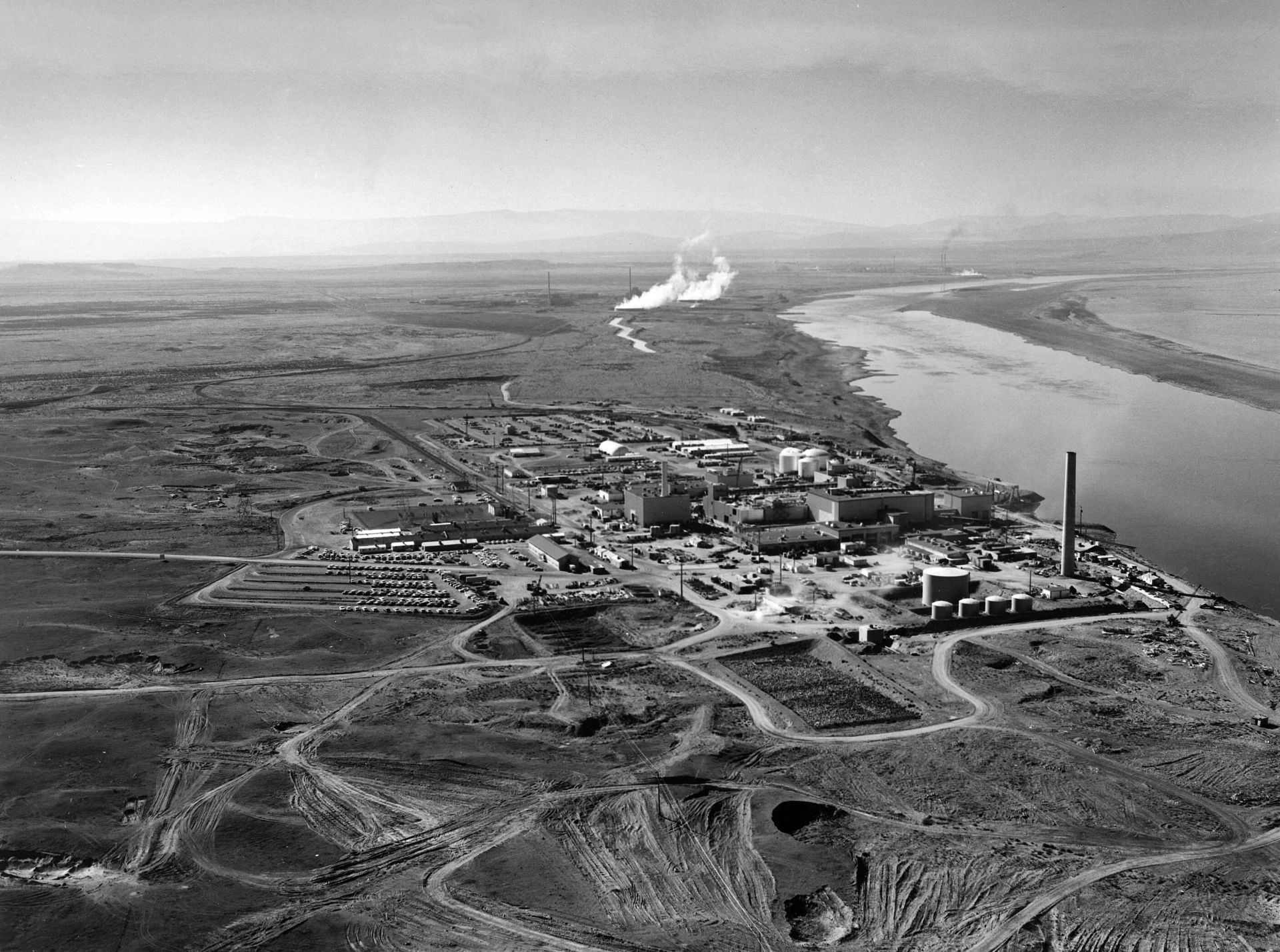A rendering of the six-module Carbon Free Power Project planned for construction in Idaho. (Image: NuScale)
NuScale Power announced October 20 that the Nuclear Regulatory Commission’s Advisory Committee on Reactor Safeguards (ACRS) issued a letter the previous day agreeing with NRC staff’s approval of NuScale’s methodology for determining the plume exposure pathway emergency planning zone (EPZ). As approved, the methodology would permit a smaller EPZ—dependent on site-specific conditions, including seismic hazards—that provides the same level of protection to the public as the 10-mile radius EPZs used for existing U.S. nuclear power plants.
September 10, 2021, 8:22AMUpdated December 31, 2021, 7:15AMNuclear NewsThomas R. Wellock An aerial view of the Hanford reservation and Columbia River that shows the N (nearest), KE/KW (center), and B (top right) reactors. (Photo: U.S. DOE )
In March 1972, Stephen Hanauer, a technical advisor with the Atomic Energy Commission, met with Norman Rasmussen, a nuclear engineering professor at the Massachusetts Institute of Technology. The AEC had recruited Rasmussen to develop a report, The Reactor Safety Study (WASH-1400), to estimate the probabilities and consequences of a major nuclear power plant accident. With thousands of safety components in a modern reactor, the task was mind-boggling. Rasmussen proposed a novel approach based on more powerful computers, “fault tree” methodology, and an expanding body of operational data. By calculating and aggregating probabilities for innumerable failure chains of components, he believed he could develop a meaningful estimate of overall accident risk. WASH-1400 would be a first-of-its-kind probabilistic risk assessment (PRA).




